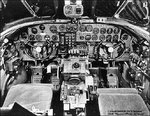Lighthunmust
Banned
Accuracy
You may be right. I haven't found anything else on accuracy other than the sentence that follows the first quote for "The Mighty Eighth" I posted.
"The performance (referring to accuracy) of individual groups, however was influenced to a large degree by how they fared with German fighters and flak; the best records were those of units who had a comparatively untroubled passage - although all had their bad times".
This sentence also makes me question the methodology of the loss percentages that were posted by Jabberwocky. I wonder if the methodology weighed the factors of numbers of each type, targets, and chronology and location of LW defense strength. The greater number of Liberators on a greater number of milk runs would skew the percentages. Perhaps percentages of Liberator lose depended on their being more Liberators to choose for targets and more less dangerous missions. If there were an equal number of B-17s flying the exact same missions the numbers may be very different. I still want to be on a B-17 if attacked.
Last edited:


